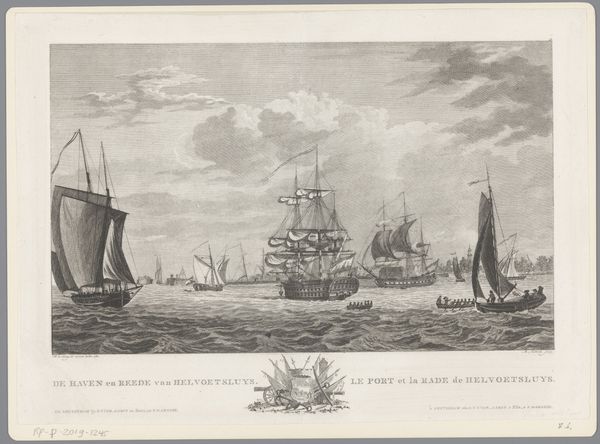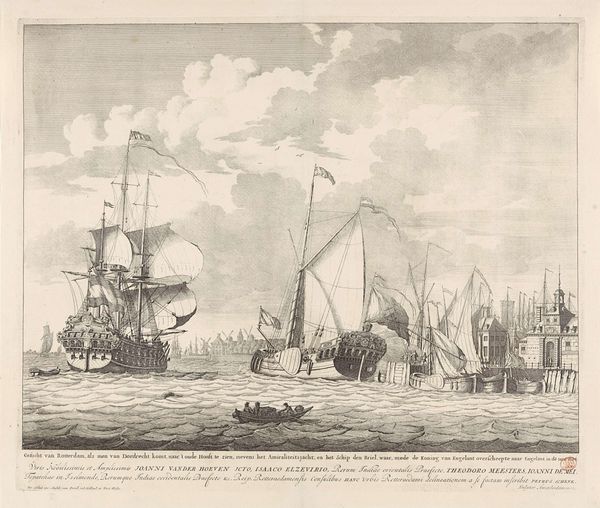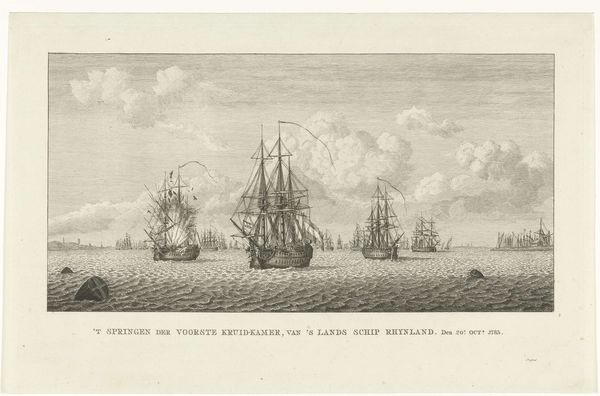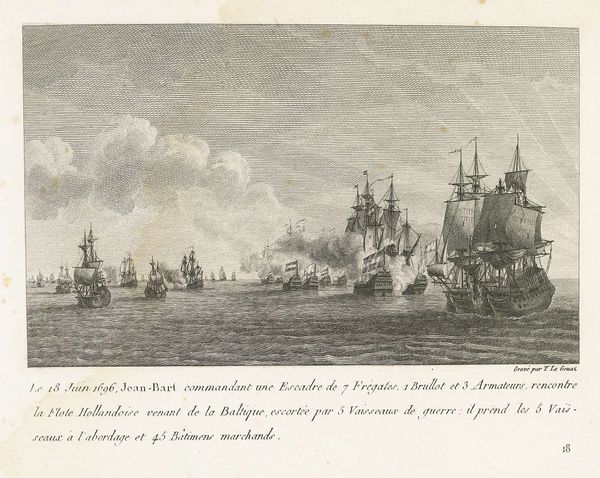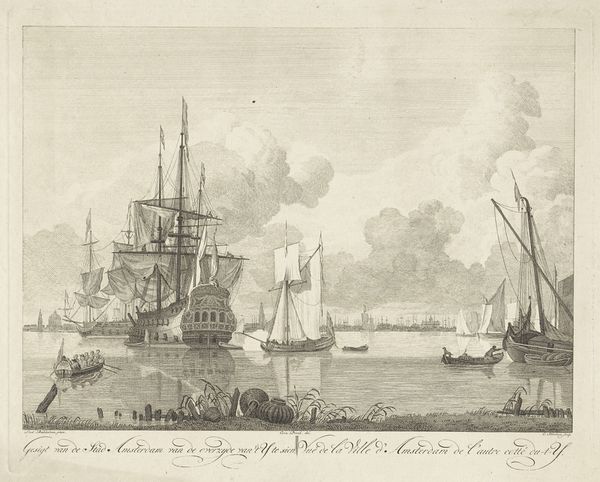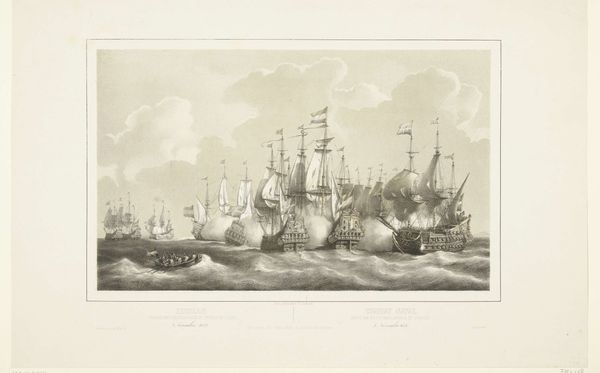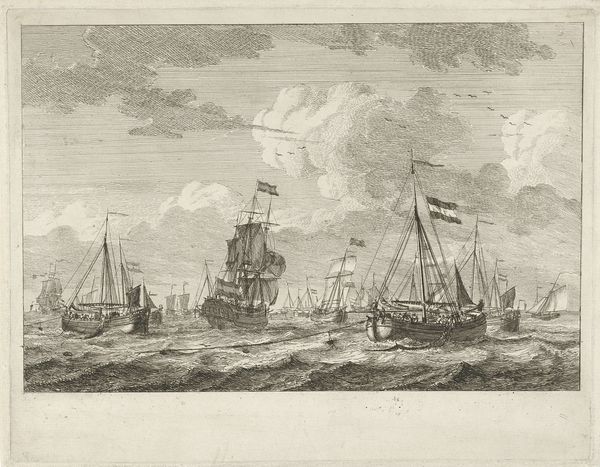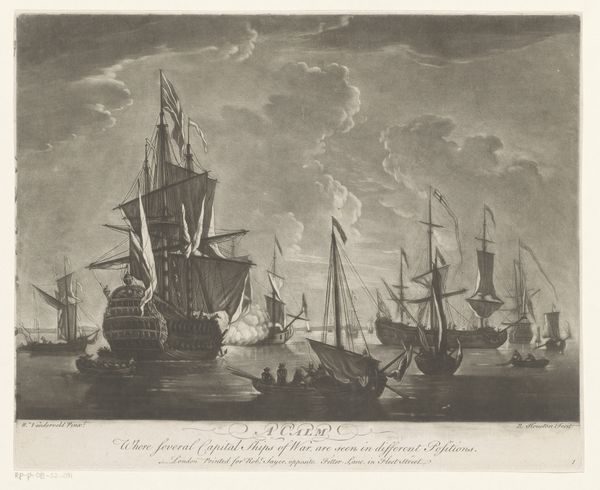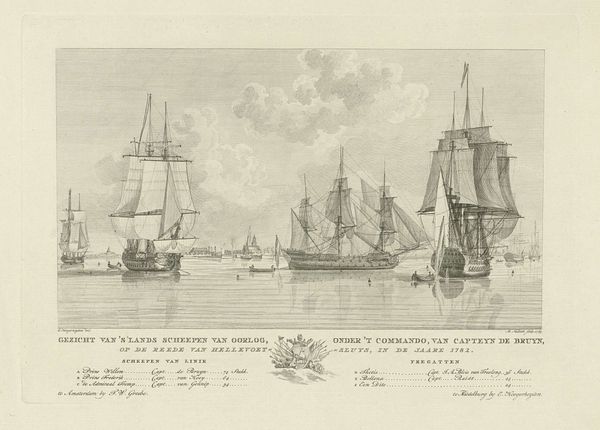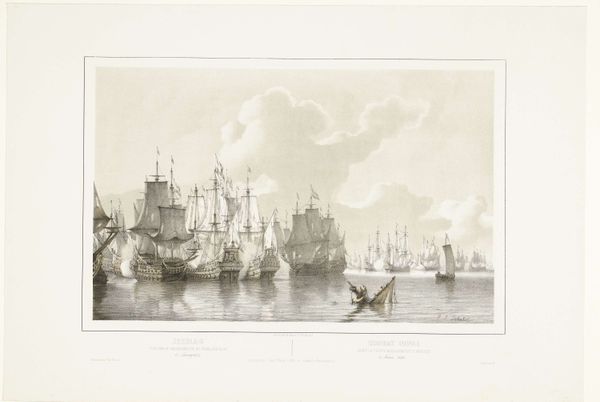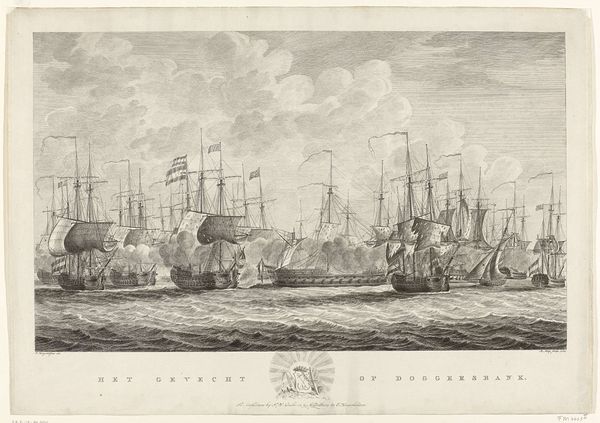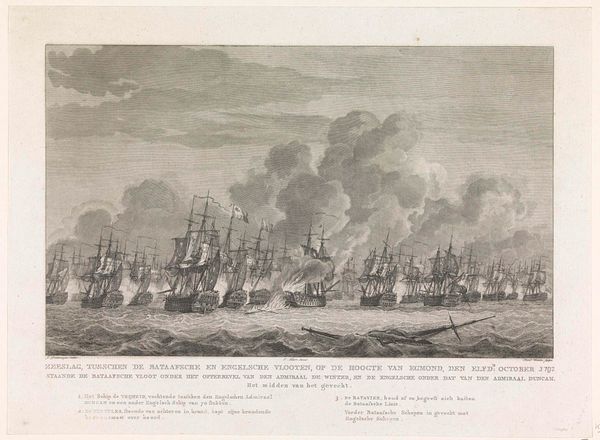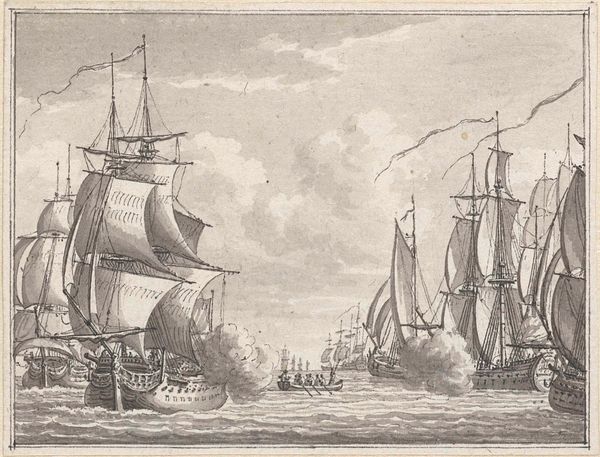
drawing, print, ink, engraving
#
drawing
# print
#
landscape
#
ink
#
romanticism
#
history-painting
#
engraving
Dimensions: height 340 mm, width 468 mm
Copyright: Rijks Museum: Open Domain
Curator: This detailed engraving by A. Lutz from 1821 captures "Overwinning op Palembang, 1821," a victory during the Palembang Expedition. Editor: My immediate sense is of something quite formal and meticulously rendered. It evokes classic maritime paintings, but with a sense of tension beneath the surface. The contrast between the massed ships and small figures hints at something unequal and fraught. Curator: Exactly. The image reflects a romanticized vision of Dutch naval power. The meticulously detailed ships become symbols of strength and authority, while the swarming rowboats filled with figures can be seen to emphasize the scope of the victory. There is an interesting contrast here, with romantic ideals expressed through the means of warfare. Editor: So, is the "victory" a signifier in itself? The name of the artwork, coupled with those imposing ships, certainly leans into an image of established power and technological dominance. Do the crowded rowboats carry their own implied symbolic meaning, in that they're presented as a less technologically advanced side in this particular instance of war? Curator: It certainly serves a political function, idealizing Dutch presence in the East Indies. You could read the clouds amassing in the distance as an indication of some sort of anxiety concerning future encounters. They certainly create a more somber mood than one would perhaps expect from a victory scene. Editor: And is that part of a larger trend? Were similar scenes made into prints and circulated back in Europe to shore up support for colonial actions? Were they effective in solidifying specific historical memory around episodes such as this one? Curator: Without a doubt. Disseminating such prints was key to shaping public opinion, lending legitimacy to colonial endeavors. They function almost like visual propaganda, recasting complex political actions into palatable narratives of triumph. The memory being constructed in images like these became extremely persistent. Editor: Fascinating how these images helped build and maintain an understanding of the world, reinforcing specific power dynamics that endure to this day. It definitely leaves you pondering who "wins" in a history painting like this, and what’s at stake in declaring it so definitively. Curator: Precisely. Lutz's engraving allows us to unpack how such images not only documented history but actively shaped it.
Comments
No comments
Be the first to comment and join the conversation on the ultimate creative platform.
